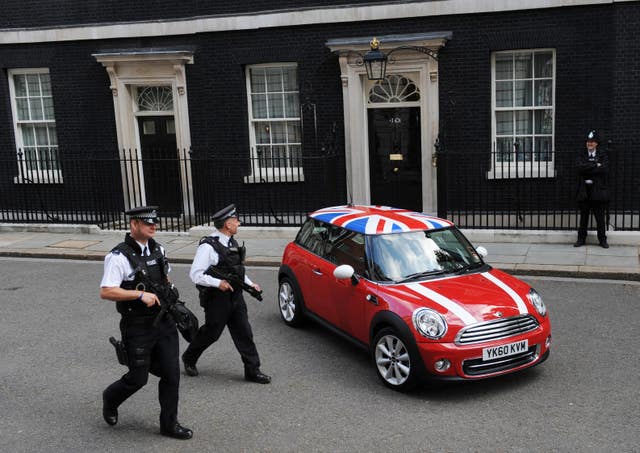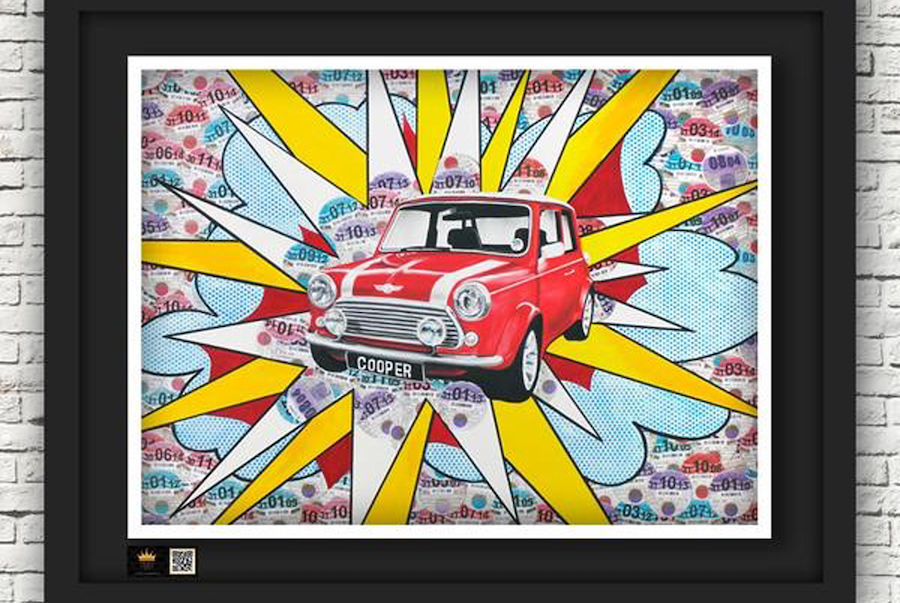The Mini at 60 – British motoring’s accidental icon
In a fabulously absurd case of unintended consequences, the Mini came about partially as a result of the Suez Crisis.
In 1956, Egyptian premier Gamal Abdel Nasser seized control of the Suez Canal, cutting off Europe’s oil-dependent fuel companies from their Middle Eastern suppliers. Petrol prices skyrocketed, filling the streets with grumbling motorists walking to and from work.
We’ll gloss over the details in-between – but one of the eventual outcomes was that, somewhere in the offices of the British Motoring Corporation, chairman Leonard Lord responded to the shortages by instructing chief engineer Alec Issigonis to build a more fuel-efficient car.

One of three original test models – this Morris Mini Minor is thought to be the oldest Mini still standing
After a two-year gestation period, out popped the Mini Mark I – a symbol of fun-loving irreverence that arrived just in time for the swinging Sixties. A family-friendly vehicle, as at-home on urban tarmac as uneven country lanes, the “classless” Mini became perhaps the first car to appeal equally to both ‘elite’ and ‘ordinary’ markets.
Known as the “big small car”, the Mini boasted deceptively high reserves of legroom and storage space, and drew inevitable comparisons with Doctor Who’s TARDIS. There followed the hotly-contested ‘how many people can fit inside a Mini’ world record, which has changed hands many times over the years (the current record, set in 2014, stands at 29).
Small is beautiful
The spirit of the Mini goes back to the Twenties and Thirties, when families that couldn’t afford a long, languid station wagon would opt for the smaller, cheaper Austin. The late-Forties brought the Morris Minor – another of Issigonis’ inventions – before Austin and Morris merged to form BMC in 1952.
When the Mini first entered circulation in 1959, BMC held a special press launch in Surrey, where assembled journalists were sent off for test drives at timed intervals around a special track. In the pre-internet age, the critic’s pen was mightier than any marketing campaign, and the rave reviews catapulted the Mini to instant stardom.

British racing driver Damon Hill stands over the ‘Magical Mystery Tour’ Mini once owned by George Harrison
The production line strained under the weight of demand, and Minis appeared in the garages of Steve McQueen, Enzo Ferrari, King Hussein of Jordan and all four of The Beatles. By the early-Sixties, the Mini could not have been more a la mode if it had come with complimentary go-go boots and CND symbols printed on the bumper. “A car that’s so unusual compared to all the other cars around it,” said Issigonis, “automatically becomes a status symbol.”
Ring-road, country lane… race-track?
The Mini’s success was built on its design. A transverse engine and gearbox pushed the wheels out to the corners, maximising internal space while ensuring a compact manoeuvrability. By front-loading the engine, most of the car’s weight rested on the front tyres, lending excellent traction and control.
It was these qualities that convinced Issigonis that his handiwork could be repurposed for more high-octane thrills – in this case, rally driving.

A Morris Mini-Minor setting off on a trial run around the Mediterranean
Initially, the Mini fared poorly, far-outgunned by more seasoned competitors, so legendary race engineer John Cooper convinced the company to let him build a Mini designed specifically for racing. With double the horsepower, to the delight underdogs everywhere, the resulting Mini Cooper S swept field after field, proving that you don’t have to be large to be in charge.
Against the deafening engines and streamlined chassis’ of modern speedsters, it seems almost comical that this mechanical featherweight could overpower the racing world – but for many years, the Mini was the model to beat at rally races across Europe.
At Monte Carlo, where it made it’s debut, Minis topped the podium in 1964, 1965 and 1967. Wondering what happened in 1966? It was almost another win, but the top four finishing cars (three of them Minis) were controversially disqualified that year, over the angle of their headlights.
An ageing dynasty
Showroom sales continued apace for many years. 1965 saw the manufacture of the one millionth Mini – ceremonially driven off the production line by Issigonis himself – and that figure had hit three million by the early-1970s.

British Olympic long jumper JJ Jegede jumps over three special edition Minis in the colours of the Union Jack
But as the Mini grew older, the sheen began to fade, and the Seventies and Eighties saw sales slump. All the movement was taking place in the boardroom rather than on the roads. BMC became British Leyland; British Leyland became The Rover Group, and in 1981, the Mini dropped out of the top 10 UK sales chart. There wasn’t much new to sell.
Instead, the Mini settled into its place as a touchstone of British culture, and a global motoring icon. To this day, thousands of fans gather for ‘Mini in the Park’ – an annual opportunity for Mini-lovers to come together, swap customisation tips and show off their perfectly preserved paintwork.
“I drive my Mini Cooper and I’m feeling super-duper,” rapped Madonna on hit track, American Life. On the silver screen, the Mini was as much the star of The Italian Job as Michael Caine, while Mr Bean’s famous Mini epitomised the car’s underdog spirit.
For the 40th anniversary in 1999, David Bowie was persuaded to design his own model. It was a coup for the marketing department, but Bowie didn’t play ball. When asked why the Mini had endured so long, he replied simply: “Parking.”
In 1994, the brand was bought by BMW, who announced a new Mini for the new millennium – the first all-new product since 1959. Engineers cycled through a range of prototypes, each designed with up-to-the-minute 3D digital rendering, a far cry from the tablecloth sketches of Alec Issigonis.

Rowan Atkinson arrives in his iconic Mini for the premiere of Mr Bean’s Holiday
In the year 2000, amid much pomp and ceremony, the last classic Mini was driven from the factory, with Sixties pop star Lulu at the wheel, bringing an era of motoring to its end. The Mini was dead; long live the BMW Mini.
The second coming
BMW’s new Mini Cooper – a gamble worth literally hundreds of millions of dollars – went down a storm with classic fans and first-time buyers. There followed (take a deep breath), the Mini One, the Mini Clubman, the Mini John Cooper Works, the Mini John Cooper Clubman, the Mini Cabrio, the Mini Countryman, the Mini 3 Door and 5 Door, the Mini Roadster, the Mini Paceman, and the Mini Coupe.

We’re not quite sure which one they’re guarding
Minis are still an unmistakable sight on Britain’s roads today, and Prime Ministers Gordon Brown and David Cameron took pains to be photographed in one. In 1999, the Mini was voted the second most influential car of the 20th century, behind only the unarguable front runner – Henry Ford’s Model T.
Among the exalted guests at the unveiling of the last classic Mini in 2000, was iconic Sixties supermodel, Twiggy. “My first car was a Mini,” she said. “I was 19 years old and it was my favourite car. They’re quintessentially British and I am too, so I feel quite proud of the Mini. I think we all should.”
The Press Association
Latest posts by The Press Association (see all)
- 5 new books to read this week - November 23, 2024
- 3 easy Mary Berry recipes to make this season - November 22, 2024
- In Pictures: Party stalwart kept New Labour in touch with traditional supporters - November 21, 2024
- 6 easy indoor exercises to try this winter – and why they are good for you - November 19, 2024
- Martin Clunes: I can’t afford to retire – I’ve got too many horses - November 19, 2024





















